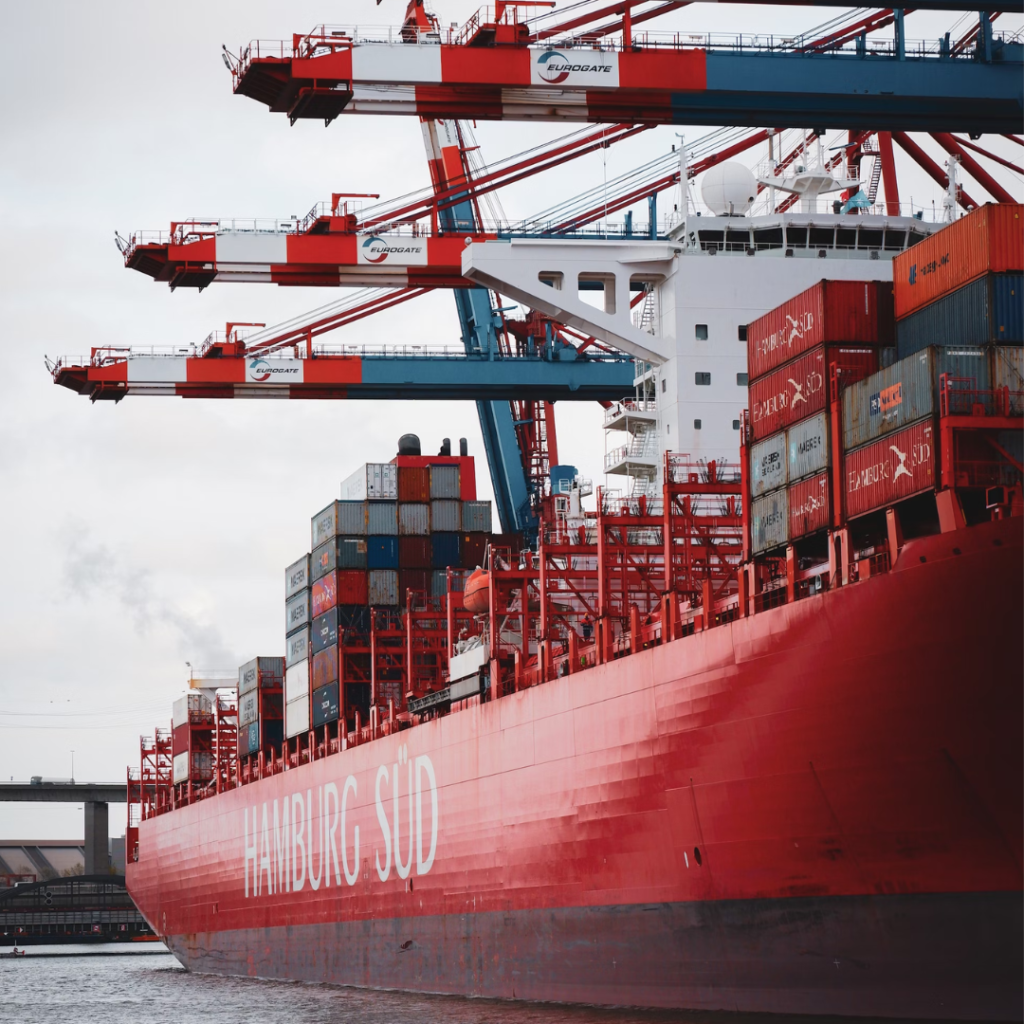

Digital Waste Passport: Traceability and Sustainability in Waste Management
Digital Waste Passport: Traceability and Sustainability in Waste Management
Waste management has become a major environmental challenge. Worldwide, the amount of waste generated continues to grow at an alarming rate. This increase is driven by population growth, urbanization, and, above all, the linear consumption model. This model encourages the production, consumption, and disposal of products without considering their entire life cycle. As a result, much of this waste ends up in landfills or, in some cases, pollutes our oceans and ecosystems.
However, growing concern about the negative effects of resource waste has prompted a transition to a more sustainable model: the circular economy. This approach promotes the reuse, recycling, and regeneration of materials, thereby reducing dependence on finite natural resources and reducing environmental impacts. In the circular waste economy, products don't end up in a landfill; instead, they are reincorporated into the production cycle and transformed into new products or recycled raw materials. This contributes to a green economy that is more responsible and resource-efficient.
Subsequently, the use of technologies like blockchain ensures that waste data is immutable, accessible, and transparent. This optimizes waste management and strengthens the confidence of regulators, businesses, and consumers in recycling and reuse processes. This promotes a faster transition to a truly sustainable circular economy.

What is the Digital Waste Passport?
What is the Digital Waste Passport?
The Digital Waste Passport is an innovative tool that facilitates the tracking and recording of waste from its origin to its final destination. This digital system allows for complete traceability at every stage of the waste life cycle.
The main purpose of the Digital Waste Passport is transform the perception of waste, adding value to each material generated throughout its life cycle. Instead of being considered simply waste, waste becomes a resource with a complete history documenting its origin, treatment, and recycling. This tool ensures that all key information about the waste, such as its type, quantity, and how it has been managed, is available. digitally registered, accessible and verifiable by all actors involved, from the generator to the recycler.
Furthermore, this information is not only valuable during the recycling process, but also becomes key data for the Digital Product Passport. This passport connects directly to the Digital Waste Passport, using the recorded waste data to provide complete traceability of the recycled material. This ensures that products made with this material are sustainable and that their life cycle is completely transparent. Thus, waste is not only managed and valued responsibly, but also integrated into a reuse cycle. strengthening the circular economy and allowing consumers and companies to know all the necessary information about the origin and treatment of the materials used in the final products.
Thanks to this traceability, it's possible to follow the path of each waste product from the moment it's generated until it's transformed into new products or recycled materials. Thus, waste is not only managed but also given real value, becoming a sustainable source of new raw materials and actively contributing to the circular economy.
Key Areas to Promote the Circular Economy through the Digital Waste Passport
Key Areas to Promote the Circular Economy through the Digital Waste Passport
For the Digital Waste Passport to be effective in promoting the circular economy, it is essential that it contain a series of information fields that guarantee complete traceability and facilitate the reuse of materials:

Waste Identification
The Digital Waste Passport must contain a unique identifier for each type of waste generated, which is assigned at the time of its creation. This field is crucial to ensure that each waste can be tracked throughout its entire useful life and, if possible, reincorporated into the production cycle. This identifier facilitates waste traceability, allowing for its proper classification, management, and transformation.
Waste Type
It is essential to specify the type of waste being managed, whether organic, metallic, plastic, electronic, etc. In addition, information must be included on the hazard of the waste (whether it is hazardous or not) and its classification according to the CER codes or LER. This field helps determine how the waste should be treated and what the best practices are for recycling or reusing it in the circular waste economy.
Quantity and Volume of Waste
This field specifies the amount of waste generated, allowing for an accurate calculation of how many resources can be recovered or recycled. The more accurate this data is, the more efficient the recycling process will be and the greater the proportion of waste that can be transformed into secondary raw materials, boosting the circular economy.
Origin of the Waste
The origin of the waste must be clearly recorded. This can include the source of production, such as factories, homes, businesses, ports, etc. In addition, data on the generating activities and the products involved must be recorded. This traceability of waste, from its creation, allows for monitoring responsible consumption practices and identifying how they can be optimized to reduce waste generation.
Waste Treatment and Transformation
This field is one of the most important in the Digital Waste Passport, as it reflects the recycling or treatment process the waste undergoes. It includes information on the treatment plant, the processes used (composting, smelting, shredding, etc.), and the technologies used.
Environmental Impact
Additionally, the Digital Waste Passport must include information on the environmental impact of the waste. This may include data on carbon footprint reduction, the use of renewable energy during recycling, or the efficiency of natural resource use. This field can also provide a clearer view of how recycled waste contributes to sustainability.
Final Destination of the Waste
The final destination of the waste must be recorded, whether in the form of recycling, reuse or landfill disposal.
Interaction between Key Actors
Interaction between Key Actors
Waste Generators
They are the entities that produce waste, such as factories, shops, homes, etc. These actors are the first to register the waste in the system, providing basic information on the type, quantity and origin of the waste.
Waste Managers
These are the companies or entities responsible for collecting, transporting, and sorting waste. The managers' work also has an impact, which is reflected throughout the entire waste treatment process thanks to the digital waste passport.
Recycling Plants
These are the facilities where waste is transformed into new materials or products from recycled sources. The Digital Waste Passport allows these plants to accurately determine the origin of the waste they receive and, based on this detailed information, add extra value to each material by ensuring it comes from verified sources with a clear record of responsible management.
Recyclers and Other Actors
In addition to the above actors, the Digital Waste Passport may include other actors in the waste lifecycle. For example, companies that transform recycled waste into new products.

Benefits of the Digital Waste Passport
Benefits of the Digital Waste Passport
The Digital Waste Passport offers several key benefits that facilitate the transition to a more efficient, transparent, and sustainable circular economy. Below, we explore how this digital system positively impacts various aspects of waste management:
Increasing Sustainability
Thanks to the traceability generated during waste treatment, the recycled materials obtained are reincorporated into the production cycle, reducing the need for virgin raw materials and reducing the environmental impact. Thus, we actively contribute to sustainability by transforming waste into valuable resources.
Este control detallado permite que los recycled materials are efficiently integrated into the company's value chain. By using these materials instead of virgin raw materials, the environmental impact associated with the extraction and processing of new resources is significantly reduced. Furthermore, by incorporating these recycled materials into final products, companies can more clearly highlight that their products are made with recycled material, which not only improves environmental sustainability but also reinforces the value of the products in the market.
By promoting the circular economy through the use of recycled materials, companies not only optimize their internal processes but also actively contribute to a more responsible production model. This not only benefits the environment by reducing waste and saving resources, but also demonstrates to consumers and regulators the companies' commitment to sustainability, fostering the transition to a greener and more circular future.
Transparency for Consumers and Regulators
A key benefit of the Digital Waste Passport It promotes transparency for consumers and regulators. Consumers can access detailed information about the origin and treatment of products, allowing them to make more sustainable choices and support companies that properly manage their waste. Furthermore, the Digital Product Passport includes data from the Digital Waste Passport, which provides consumers with information on how recycled materials were managed and processed before being incorporated into the product. This way, complete traceability, from waste to the final product, is accessible to consumers. This fosters trust in recycled products and supports new business models that promote the circular economy.
Regulatory authorities can also easily verify compliance with regulations without physical inspections. With access to up-to-date data, regulators can monitor waste management in real time. This strengthens oversight and ensures that companies fulfill their responsibilities. By offering clear traceability, companies can differentiate themselves in the market, demonstrating their commitment to recycling and sustainability. This opens the door to new, responsible business models.
Improving Efficiency
One of the most notable benefits of the Digital Waste Passport is the improvement in operational efficiency. Thanks to the automation of documentation and the digitalization of workflows, waste management processes become faster and more efficient.
With the Digital Passport, all necessary documentation is generated and managed digitally, eliminating the use of paper and reducing the possibility of human error. Furthermore, waste information is available in real time, allowing companies to act more quickly and accurately. This not only optimizes processes but also facilitates informed decision-making regarding waste treatment or recycling.
Regulatory Compliance
Compliance with environmental regulations is critical for waste management companies. Waste management laws can be complex and vary from country to country, making regulatory compliance difficult. The Digital Waste Passport greatly facilitates this process by providing a transparent and efficient platform for recording and tracking the waste lifecycle.
This system not only ensures that waste is managed in accordance with regulations, but also allows companies to demonstrate the responsible origin from recycled or reused materials. This adds significant value to the materials, transforming them into reusable and ensuring its traceability throughout the entire process. The regulatory authorities can quickly access this information, which simplifies auditing and control, and facilitates compliance verification local and international regulations, such as recycling regulations, hazardous waste management, and emissions reduction standards. By providing this visibility and control over the origin of materials, the risk of penalties for noncompliance is reduced and the relationship between companies and regulatory bodies is improved, contributing to more transparent and sustainable waste management.
Real Use Cases
Real Use Cases
PORTWASTE is an outstanding example of the use of Digital Waste Passport in the maritime sector, where waste management is essential due to the high generation of waste in ports and ships. This system optimizes the traceability of waste, from its origin to its final disposal, significantly improving transparency throughout the process.
In addition, PORTWASTE reduces time and costs by eliminating manual processes and duplication of information, increasing operational efficiency. The system also ensures the compliance with international environmental standards, promoting more sustainable management. This facilitates rapid and well-founded decision-making by all stakeholders, ensuring compliance with all environmental regulations and improving the waste management process in ports.
How does PORTWASTE work?
How does PORTWASTE work?
The system PORTWASTE implements the Digital Waste Passport to manage the waste generated by ships entering and leaving ports. Every time a ship generates waste, it is digitally recorded through the Digital Passport. This tool allows port managers, authorities, and other stakeholders to access detailed, real-time information on the waste generated, its type, quantity, and final destination.
Registration and Monitoring of Generated Waste
When a ship arrives at port, the port authority or the responsible agent of the boat records the waste generated during the trip. This includes solid waste, used oils, waste water and other hazardous or non-hazardous waste. Each type of waste receives one Digital Passport unique that identifies it and assigns it a digital record with information about its origin, type, volume and required treatment.
Interaction with Recyclers and Treatment Plants
Once registered, the waste is sent to recyclers or specialized treatment plants., where they are treated accordingly. The Digital Passport allows both recyclers and port managers to access data on the nature of the waste, helping them determine the better recycling process or disposal. This information is also used to ensure that hazardous waste is treated in accordance with environmental regulations and that recyclable waste is reincorporated into the value chain.

Transparency and Regulatory Compliance
Using the Digital Passport in PORTWASTE guarantees total transparency. in waste management at ports. Regulatory authorities can access the digital platform to verify that waste is being managed correctly, and ensure that international standards, such as those set out in the MARPOL Convention to prevent maritime pollution. Thanks to blockchain technology, data is immutable and auditable, providing a legal and regulatory coverage on the management of waste generated by vessels.
Facilitating Environmental Sustainability
PORTWASTE not only contributes to traceability and operational efficiency, but also facilitates the circular economy in the maritime sector. By ensuring that waste is properly recycled or responsibly treated, the system helps reduce the carbon footprint of ports and vessels. Recycled materials can be reincorporated into other sectors, such as the manufacturing of new products, closing the life cycle of materials and reducing the need for natural resources.
The Importance of the Digital Waste Passport for the Future of Waste Management
The Importance of the Digital Waste Passport for the Future of Waste Management
The Digital Waste Passport not only improves waste management but also provides significant value to the final product. By enabling detailed waste tracking, companies can incorporate recycled materials more efficiently, reducing the need for virgin resources and minimizing environmental impact.
This process also reinforces environmental sustainability and allows companies to clearly highlight that their products are made with recycled materials, increasing their market value. By providing full traceability, the Digital Passport ensures that consumers can trust the quality and responsibility of products, which strengthens companies' competitiveness. Thus, the Digital Waste Passport becomes an essential tool for those seeking not only to be more responsible, but also more competitive in an environment increasingly focused on sustainability.
At Blue Room Innovation, we are committed to the sustainability and circular economy, and we want to help you take the next step in waste management. Our team is ready to guide you through the implementation of the Digital Waste Passport, providing the tools you need to improve the traceability of your recycled materials, ensure regulatory compliance, and strengthen the sustainability of your products.
Contact us today to find out how we can help you optimize your waste management processes and bring real value to your business, while actively contributing to a more sustainable future.
Products
Digital Product Passport
Descentralized platforms
Descentralized Identity
Verificable Credentials
About us
Team
Methodology
Our Mission
Connect
Cristòfol Grober 4, local 35
17001 - Girona
info@blueroominnovation.com
Follow us
Copyright © 2024 Blue Room Innovation Privacy Policy - Legal Warning - Cookies Policy